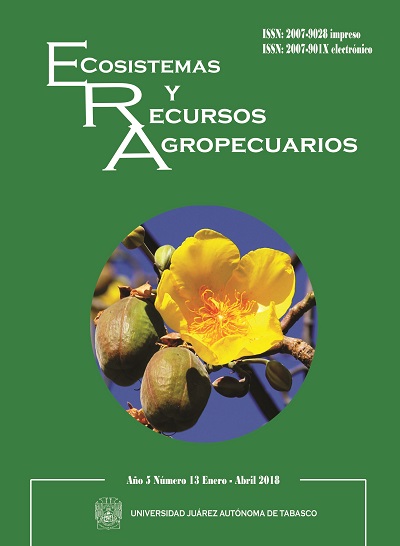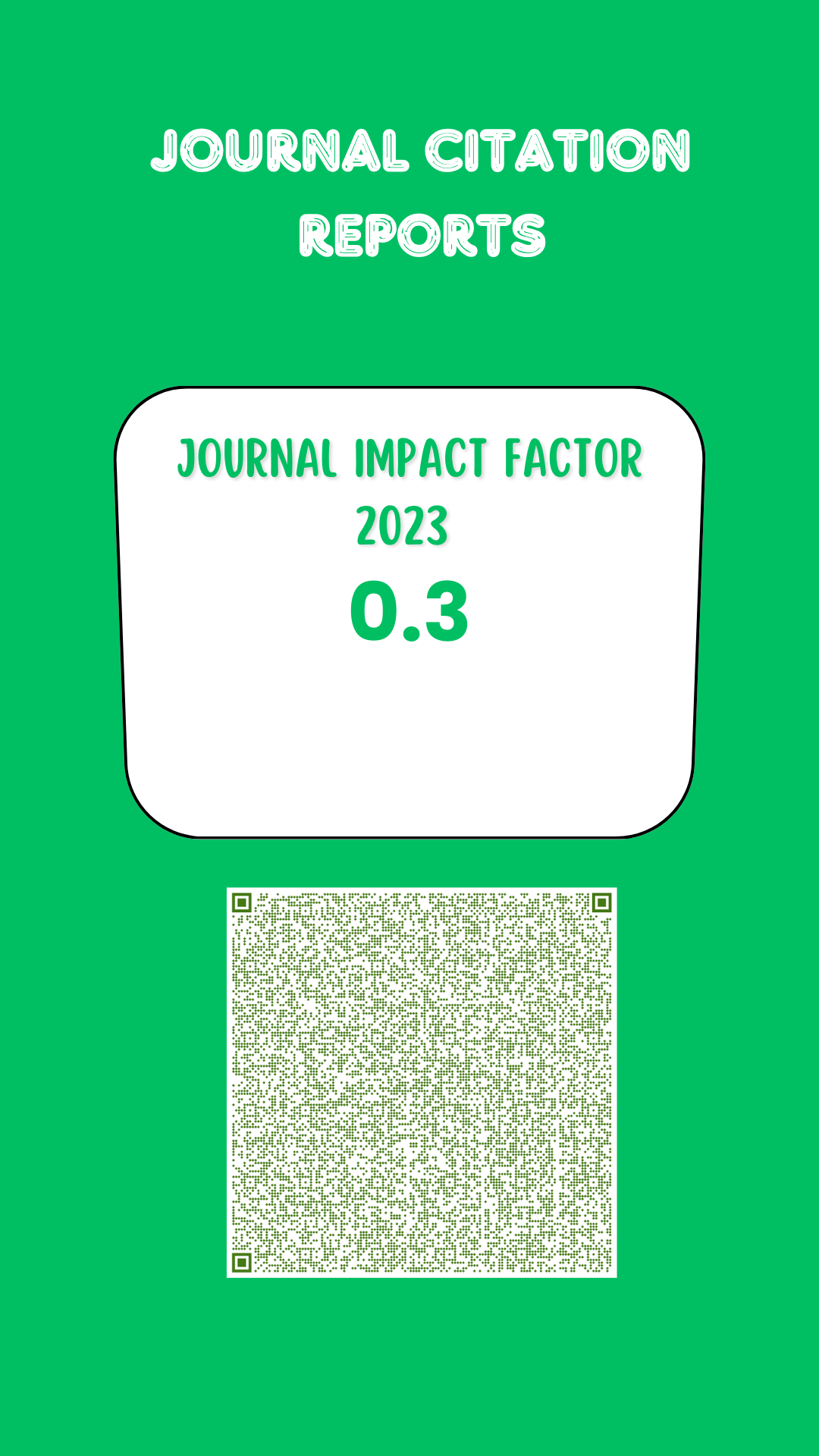Differentiation of apomictic and sexual genotypes of Brachiaria spp., using molecular markers
DOI:
https://doi.org/10.19136/era.a5n13.1180Palabras clave:
AFLPs, CAPS, DNA, forraje, polimorfismo.Resumen
Some species of Brachiaria are cultivated in the tropics because of their high productivity and drought resistance; their apomictic hybrids are of interest because of the almost null segregation and xation of the hybrid vigor in seeds. In this research, Amplied Fragment Length Polymorphism (AFLP) and Cleaved Amplied Polymorphic Sequence (CAPS) markers were used to dierentiate apomictic tetraploid and sexual diploid Brachiaria parents and their progeny. Polymorphism detected with AFLP was 91.3% and with CAPS 79.7%. Phenograms dierentiated each genotype and the clustering of parents and their progeny was by their degree of genetic relatedness. AFLP did not separate the apomictic genotypes from the sexual ones, but CAPS markers did so through the C15-8 marker. Some apomictic genotypes of the progeny inherited it from their B. ruziziensis sexual mother, which may be related to some segregating character of the parental line.
Descargas
Referencias
Azofeita-Delgado A (2006) Uso de marcadores moleculares en plantas; aplicación en frutales del trópico. Agronomía Mesoamericana 17: 221-242.
Bicknell RA, Koltunow AM (2004) Understanding apomixis: recent advances and remaining conundrums. The Plant Cell 16: S228-S245.
Catanach AS, Erasmuson SK, Podivinsky E, Jordan BR, Bicknell R (2006) Deletion mapping of genetic regions associated with apomixis in Hieracium. Proceedings of the National Academy of Sciences of the United States of America 103: 18650-18655.
Cavagnaro PF, Cavagnaro JB, Lemes JL, Masuell RW, Passera CB (2006) Genetic diversity among varieties of the native forage grass Trichloris crinite based on AFLP markers, morphological characters, and quantitative agronomic traits. Genome 49: 906-918.
CIAT (2002) Annual Report: Part 1: Grass and legume genotypes with high forage attributes. CIAT. Cali, Colombia. 23p.
De la Cruz-Llanas JJ, Vera-Graziano J, López-Collado J, Pinto MV, Garza-García R (2005) Una técnica simple para el desarrollo de ninfas de Aeneolamia postica (Homoptera: Cercopidae). Folia Entomológica Mexicana 44: 91-93.
Dellaporta SL, Wood J, Hicks JB (1983) A plant DNA minipreparathion: Version II. Plant Molecular Biology Reporter 1: 19-21.
Do Valle CB, Miles JW (2001) Breeding of apomictic species. In: CYMMYT (Ed.). The owering of apomixis: from mechanisms to genetic engineering. CYMMYT/IRD. Mexico. pp: 137-152.
Dore JC, Ojasoo T (2001) How to analyze publication time trends by correspondence factor analysis: Analysis of publications by 48 countries in 18 disciplines over 12 years. Journal of the Association for Information Science and Technology 52: 763-769.
FAO (2009) El estado mundial de la agricultura y la alimentación. Organización de las Naciones Unidas para la Agricultura y la Alimentación. Roma, Italia. 184p.
Grimanelli D, Leblanc O, Perotti E, Grossniklaus U (2001) Developmental genetics of gametophytic apomixis. Trends in Genetics 17: 597-604.
Hand ML, Koltunow AM (2014) The genetic control of apomixis: Asexual seed formation. Genetics 197: 441-450.
Koltunow AM, Bicknell RA, Chaudhury AM (1995) Apomixis: Molecular strategies for the generation of genetically identical seeds without fertilization. Plant Physiology 108: 1345-1352.
Konieczny A, Ausubel FM (1993) A procedure for mapping Arabidopsis mutations using co-dominant ecotype- speci c PCR-based markers. The Plant Journal 4: 403-410.
Labombarda P, Busti A, Caceres MA, Pupilli F, Arcioni S (2002) An AFLP marker tightly linked to apomixis reveals hemizygosity in a portion of the apomixis-controlling locus in Paspalum simplex. Genome 45: 513-519.
Lascano CE (2002) Caracterización de las pasturas para maximizar producción animal. Archivos Latinoameri- canos de Producción Animal 10: 126-132.
Miles JW, Do Valle CB, Rao IM, Euclides VP (2004) Brachiaria grasses. In: Sollenberger LE, Moser LE, Burson BL (eds) Warm-season (C4) grasses. Agronomy monograph 45, American Society of Agronomy, Crop Science Society of America, Soil Science Society of America. Madison, WI, USA. pp: 745-783.
Möhring S, Horstmann V, Esch E (2005) Development of a molecular CAPS marker for the self-incompatibility locus in Brassica napus and identi cation of di erent S alleles. Plant Breeding 124: 105-110.
Nei M, Li WH (1979) Mathematical model for studying genetic variation in terms of restriction endonucleases. Proceedings of the National Academy of Sciences United States of America 76: 5269-5273.
Noyes RD, Rieseberg LH (2000) Two independent loci control agamospermy (apomixis) in the triploid owering plant Erigeron annuus. Genetics 155: 379-390.
Ozias-Akins P, Roche D, Hanna WW (1998) Tight clustering and hemizygosity of apomixis-linked molecular markers in Pennisetum squamulatum implies genetic control of apospory by a divergent locus that may have no allelic form in sexual genotypes. Proceedings of the National Academy of Sciences of the United States of America 95: 5127-5132.
Rao IM, Miles JW, García R, Ricaurte J (2006) Selección de híbridos de Brachiaria con resistencia a aluminio. Pasturas Tropicales 28: 12-15.
Risso-Pascotto C, Pagliarini MS, Valle CB (2005) Meiotic behavior in interspeci c hybrids between Brachiaria ruziziensis and Brachiaria brizantha (Poaceae). Euphytica 145: 155-159.
Sambrook J, Fritsch EF, Maniatis T (1989) Molecular cloning: a laboratory manual. 2a. ed. Cold Spring Harbor Laboratory Press, NY, USA. pp: 18.51-18.57.
Savidan Y (2000) Apomixis: Genetics and breeding. In: Janick J (Ed.). Plant Breeding Reviews Volume 18. Wiley. New York, USA. pp: 13-86.
Williams JGK, Kubelik AR, Livak KJ, Rafalski JA, Tingey SV (1990) DNA polymorphisms ampli ed by arbitrary primers are useful as genetic markers. Nucleic Acids Research 18: 6531-6535.
Zhang J, Stewart JMD (2000) Economical and rapid method for extracting cotton genomic DNA. The Journal of Cotton Science 4: 193-201.
Zorzatto C, Chiari L, Araújo-Bitencourt G, Do Valle CB, De Campos-Leguizamón GO, Schuster I, et al. (2010) Identi cation of a molecular marker linked to apomixis in Brachiaria humidicola (Poaceae). Plant Breeding 129: 734-736.
Descargas
Publicado
Número
Sección
Licencia
1. Política propuesta para revistas de acceso abierto
Los autores/as que publiquen en esta revista aceptan las siguientes condiciones:
1. Los autores/as conservan los derechos de autor y ceden a la revista el derecho de la primera publicación, con el trabajo registrado con la licencia internacional Creative Commons Reconocimiento-No comercial-Compartir igual 4.0 .de atribución de Creative Commons, que permite a terceros utilizar lo publicado siempre que mencionen la autoría del trabajo y a la primera publicación en esta revista.
2. Los autores/as pueden realizar otros acuerdos contractuales independientes y adicionales para la distribución no exclusiva de la versión del artículo publicado en esta revista (p. ej., incluirlo en un repositorio institucional o publicarlo en un libro) siempre que indiquen claramente que el trabajo se publicó por primera vez en esta revista.
3. Se permite y recomienda a los autores/as a publicar su trabajo en Internet (por ejemplo en páginas institucionales o personales) antes y durante el proceso de revisión y publicación, ya que puede conducir a intercambios productivos y a una mayor y más rápida difusión del trabajo publicado (vea The Effect of Open Access).

Este trabajo está sujeto a una licencia internacional Creative Commons Reconocimiento-No comercial-Compartir igual 4.0 .



